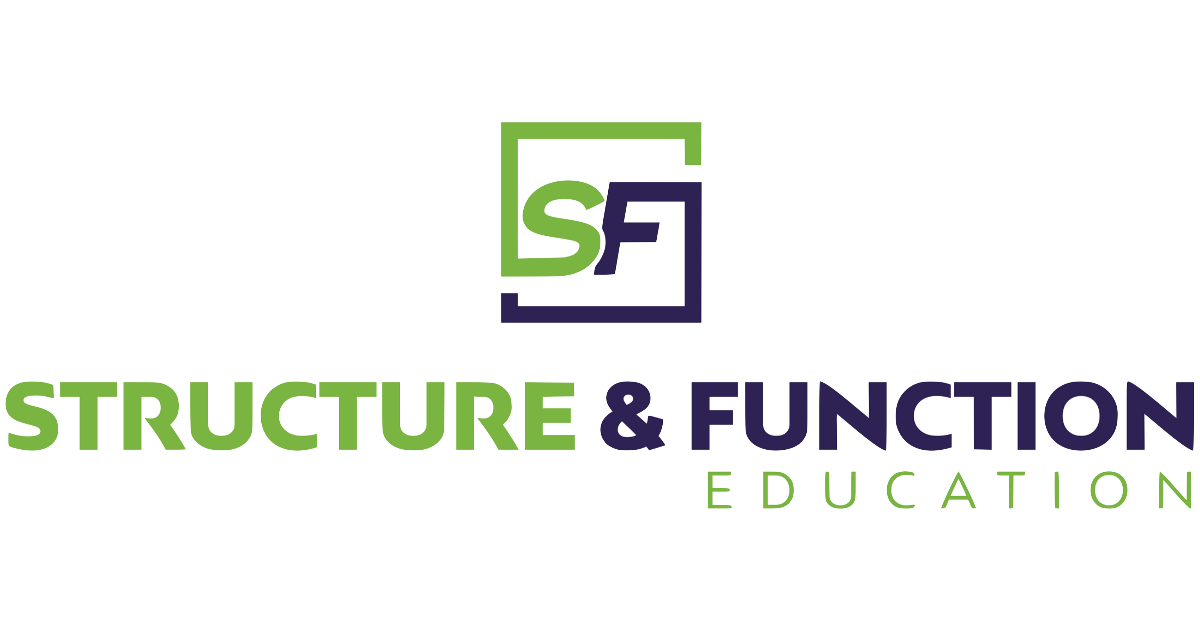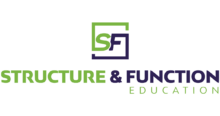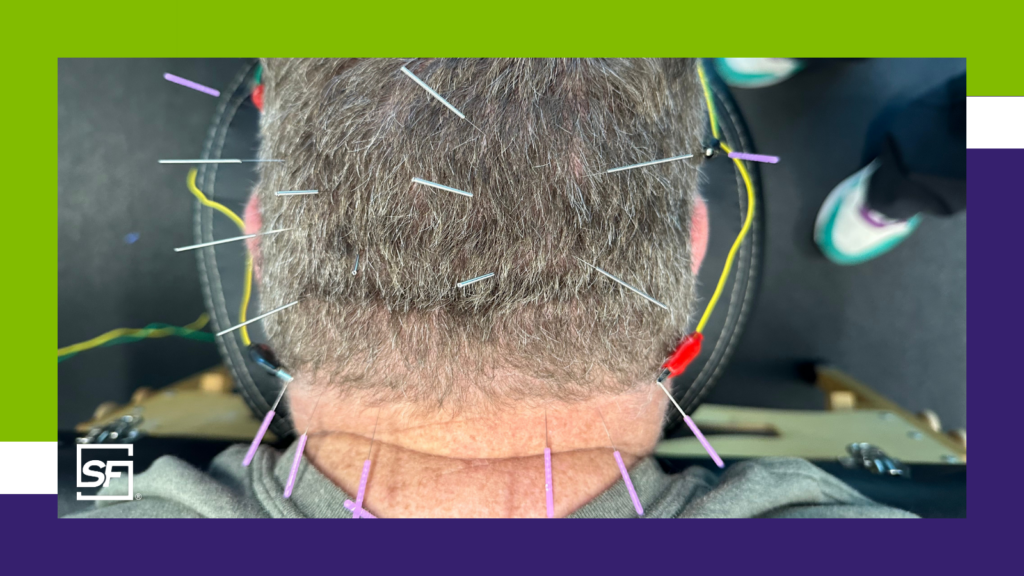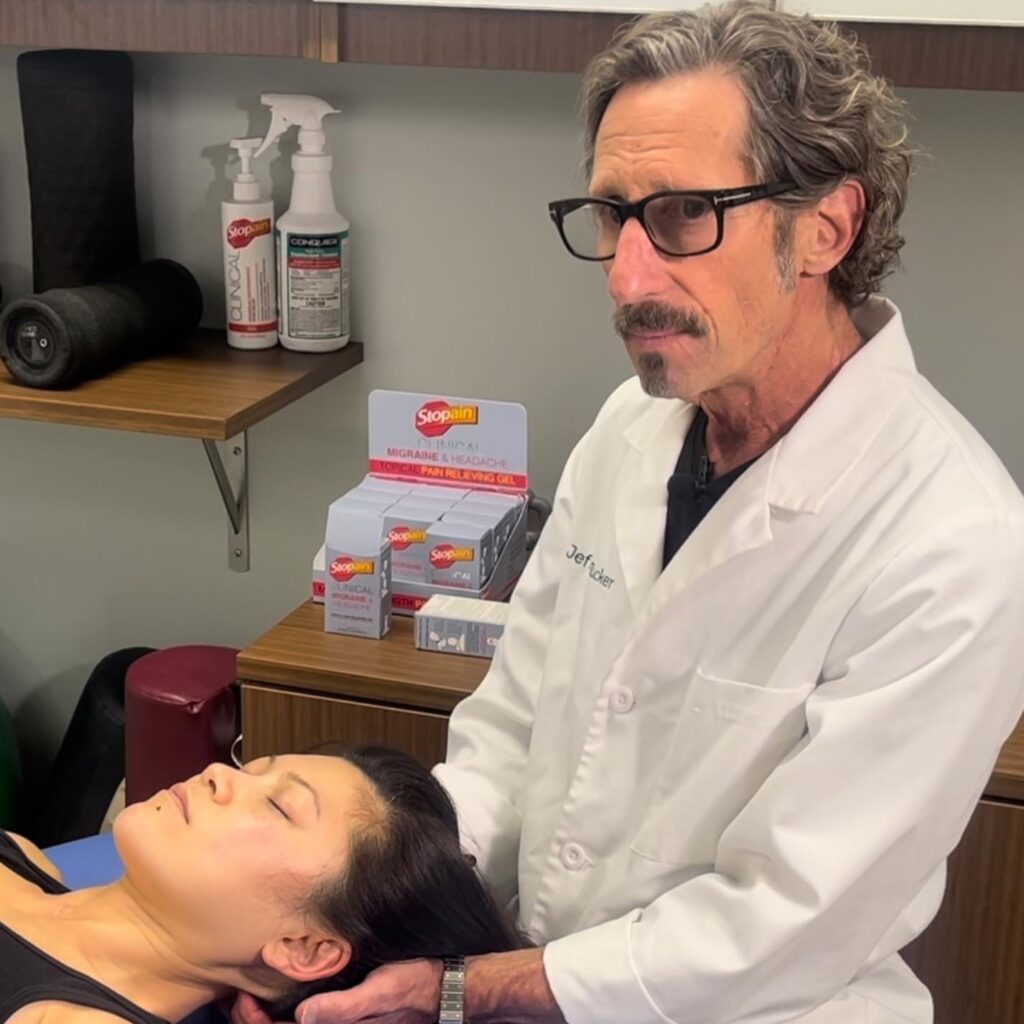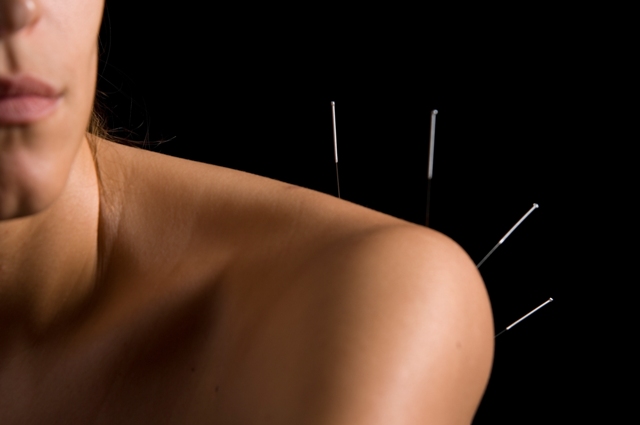Combining Multiple Methods To Treat Headaches
As we exit National Headache Month, I want to discuss the need for combining multiple methods to treat headaches for most chronic headache sufferers. A patient can create a comprehensive approach with their healthcare practitioners using dry needling and fascial manipulation® techniques plus combine Stopain Clinical Migraine & Headache Gel with at home exercises and other lifestyle changes to treat their chronic headaches.
For over 25 years as an athletic trainer and sports medicine provider I’ve been helping patients manage and alleviate headaches and migraines. I’ve developed a multifaceted approach that combines my specialized training in both dry needling and Stecco’s Fascial Manipulation® techniques with the at-home use of Stopain Clinical Migraine & Headache Gel. This multifaceted approach provides relief during treatments and empowers patients with at-home strategies to reduce pain and the frequency of headaches.
Understanding Dry Needling and Fascial Manipulation
Dry Needling: This technique involves inserting fine needles into specific anatomical locations in the head and neck. The goal is to produce local, segmental, and systemic effects that alleviate headaches by reducing pain and relaxing muscles. By targeting anatomic targets and specific local areas of tension, dry needling helps decrease the frequency and intensity of headaches.1–5
Fascial Manipulation: Fascial Manipulation® addresses densifications in the fascia, which can lead to tension-type headaches. This method involves manual techniques to release these densifications, thereby reducing tension and pain. By restoring normal fascial function, patients often experience significant relief from headache symptoms.6–8 A nice description of how Fascial Manipulation® can be used can be found at this link.
At-Home Care: Exercises and Lifestyle Changes
Exercises and Stretches: I provide patients with specific exercises and stretches to perform at home. These exercises target the neck and shoulder muscles to reduce tension and improve posture. Justin’s recent blog provides you a great idea of the at-home exercises that can be used.
Lifestyle and Dietary Changes:
Our lifestyle and dietary habits affect our bodies here is a quick list that you can use to make changes in your daily habits that can help treat headaches.
- Get a Good Night’s Sleep: Aim for 6-8 hours of sleep each night.
- Avoid caffeine after the morning
- Steer clear of foods that upset digestion.
- Exercise regularly and maintain a consistent bedtime.
- Avoid vigorous exercise and intellectually stimulating activities before bed.9
Relaxation and Stress Management Techniques:
Yoga, Pilates, and meditation can all drive parasympathetic systems of the body and be very beneficial for headache sufferers. I often teach patients deep breathing or boxed breathing exercises, which involve practicing deep breathing techniques to relax and reduce stress. Boxed breathing involves inhaling for 4 seconds, holding for 4 seconds, exhaling for 4 seconds, and holding again for 4 seconds. These lifestyle and self-care approaches allow patients to manage headache intensity and frequency better.
Integrating Stopain Clinical Migraine & Headache Gel
I recommend Stopain Clinical Migraine & Headache Gel as an adjunct to in-clinic treatments. These topical gels can be used at home between sessions or at the onset of a headache. The menthol in Stopain Clinical Migraine & Headache Gel provides a cooling effect that can help soothe and reduce headache pain. Patients find that combining these products with our in-clinic treatments offers a comprehensive approach to managing their headaches.
Efficacy of Stopain Clinical Migraine & Headache Gel for Migraine Attacks
A recent study investigated the efficacy and tolerability of Stopain Clinical Migraine & Headache Gel for migraine attacks. The study included 25 patients with episodic migraines who applied Stopain topical menthol 6% gel to the skull base within 2 hours of headache onset. The results were promising:
- 28% of patients reported no pain 2 hours after application.
- 52% of patients experienced an improvement in pain intensity.
- By 24 hours, only two patients still had mild headaches without needing rescue medication.
These results suggest that Stopain Clinical Migraine & Headache Gel can be an effective treatment for acute migraine attacks, providing significant pain relief.10
Conclusions
You can reduce the frequency and intensity of your headaches by combining dry needling, fascial manipulation, and Stopain Clinical Migraine & Headache Gel into a powerful approach to managing and alleviating headaches. My years of experience have shown when combining multiple methods to treating headaches into your routine and following the recommended at-home care strategies a patient’s suffering from migraines can be alleviated. If you’re struggling with headaches or migraines, consider scheduling a consultation with a Structure and Function Education® trained clinician to explore how these treatments can help you find relief.
For healthcare practitioners
Structure & Function Education® has several curricular offerings to help you better treat headache pain. If you’re interested in learning how Structure & Function Education’s® Pentamodal Method of dry needling can help you treat your patients with headaches, enroll today in Foundations in Dry Needling for Orthopedic Rehab & Sports Performance and learn more advanced therapies in our Comprehensive Approach to Craniofacial and Upper Quarter Dysfunction course. If you are interested in hands-on manipulative therapies to treat headaches, we also have courses for you. Structure & Function Education’s® : Foundations of Joint Manipulation by Fix Medical Group (JMN1) and the Fascial Manipulation® Method by Stecco (FM) course program at structureandfunction.net.
References
- [PubMed] Linde K, Allais G, Brinkhaus B, et al. Acupuncture for the prevention of tension-type headache. Cochrane Pain, Palliative and Supportive Care Group, ed. Cochrane Database Syst Rev. Published online April 19, 2016. doi:10.1002/14651858.CD007587.pub2
- [PubMed] France S, Bown J, Nowosilskyj M, Mott M, Rand S, Walters J. Evidence for the use of dry needling and physiotherapy in the management of cervicogenic or tension-type headache: A systematic review. Cephalalgia. 2014;34(12):994-1003. doi:10.1177/033310241452
- [PubMed] Jung A, Carvalho GF, Szikszay TM, Pawlowsky V, Gabler T, Luedtke K. Physical Therapist Interventions to Reduce Headache Intensity, Frequency, and Duration in Patients with Cervicogenic Headache: A Systematic Review and Network Meta-Analysis. Phys Ther. Pu
- [PubMed] Porter M, Griswold D, Gargano F, Ickert E, Learman K. Immediate effects of superficial dry needling of the trigeminal nerve innervation field for participants with cervicogenic headache. A randomized controlled trial. Physiother Theory Pract. Published on
- [Publisher] Perreault T, Cummings M, Dommerholt J, Hayes D, Hobbs J. Periosteal Needling to the Cervical Articular Pillars as an Adjunct Intervention for Treatment of Chronic Neck Pain and Headache: A Case Report. Appl Sci. 2022;12(6):3122. doi:10.3390/app12063122
- [PubMed] Stecco C, Stecco A. Fascial manipulation. In: Fascia: The Tensional Network of the Human Body. Elsevier; 2012:335-342. doi:10.1016/B978-0-7020-3425-1.00007-6
- [PubMed] Stecco A, Gesi M, Stecco C, Stern R. Fascial Components of the Myofascial Pain Syndrome. Curr Pain Headache Rep. 2013;17(8):352. doi:10.1007/s11916-013-0352-9
- [Publisher] Stecco C, Hammer W, Vleeming A, De Caro R. Fasciae of the Head and Neck. In: Functional Atlas of the Human Fascial System. Elsevier; 2015:103-139. doi:10.1016/B978-0-7020-4430-4.00004-X
- [PubMed] Cho S, Lee MJ, Park HR, Kim S, Joo EY, Chung CS. Effect of Sleep Quality on Headache-Related Impact in Primary Headache Disorders. J Clin Neurol Seoul Korea. 2020;16(2):237-244. doi:10.3988/jcn.2020.16.2.237
- [PubMed] St. Cyr A, Chen A, Bradley KC, Yuan H, Silberstein SD, Young WB. Efficacy and Tolerability of STOPAIN for a Migraine Attack. Front Neurol. 2015;6:11. doi:10.3389/fneur.2015.00011
